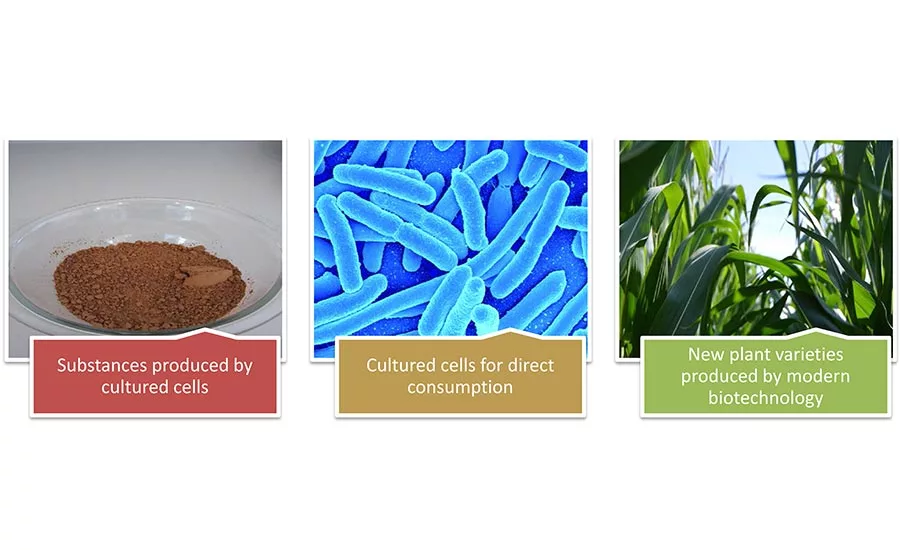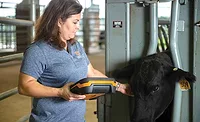Manufacturing News
Cell-cultured meat concerns

Cell cultures have been used for some time, creating substances that can be used as food ingredients (e.g., enzymes, oils and transgenic proteins), cells that can be consumed directly or new plant varieties produced by biotechnology.
Art courtesy of FDA
USDA and FDA have formally agreed to address the regulatory oversight of meat proteins produced by cell-cultured lines of livestock and poultry. Both federal agencies held a joint public meeting on the use of cell culture technology and discussed the technology, its theory, application and issues. Videos of the meetings were recently posted on the UDSA website.
The formal joint agreement, which addresses the regulatory oversight of human food produced using this technology, describes the oversight roles and responsibilities for both agencies and how the agencies will collaborate to regulate the development and entry of these products into commerce. This shared regulatory approach will help to ensure that cell-cultured products derived from the cell lines of livestock and poultry are produced safely and are accurately labeled.
Under terms of the formal agreement, the agencies agreed upon a joint regulatory framework wherein FDA oversees cell collection, cell banks, and cell growth and differentiation. A transition from FDA to USDA/FSIS oversight will occur during the cell harvest stage. FSIS will oversee the production and labeling of human food products derived from the cells of livestock and poultry.
During the public meeting, Leah Stitz, public affairs specialist for FDA’s CFSAN, defined animal cell culture food technology as the controlled growth of animal cells from livestock, poultry, fish or other animals; their subsequent differentiation into various cell types; and their collection and processing into food.
Concerns for food safety
While cell lines have already been used safely to produce enzymes, oils and transgenic proteins, several concerns remain in how to keep cultured meat/protein products safe, according to the FDA and USDA. Jeremiah Fasano, consumer safety officer, Division of Biotechnology and GRAS Notice Review, Office of Food Additive Safety, CFSAN, outlined these concerns for anyone starting out with this technology:
- Could adventitious agents be plausibly introduced into culture from seed cells or culture materials that might pose risks to human health from a finished food product? If so, what are they, and what tools would be most effective at managing these risks?
- What does previous cell culture experience tell us about the potential for contamination during the culture process, scaling effects and the likelihood of risks to human health from a finished food product?
- What kinds of substances used in cell culture media would be present in meaningful amounts in the finished food product, and are ordinary food ingredient evaluation procedures sufficient?
- What kinds of structural materials might be used to culture tissues (e.g., scaffolding), and are there any that could not be addressed by ordinary food ingredient safety assessment?
- How likely is it that cultured animal cells could produce harmful substances as a result of errors in the culture process?
- What are the characteristic nutritional properties of foods produced by traditional techniques from animals, such as cattle, swine, poultry and fish? What departures from these characteristics would be expected in food products of animal cell culture technology derived from their respective sources? Are these departures material with regard to nutritional or non-nutritional considerations?
Besides the concerns Fasano described, public questions explored several issues. For example, what hazards are the same between traditional meat and poultry products and the products of cell culture technology, and which hazards are different? What are the most significant sources of potential hazards?
While agency spokespeople intimated that industry has more experience in cell cultures than federal authorities, Thomas Gremillion, director of food policy at the Consumer Federation of America, doesn’t want to hand over complete say to industry. “The inspection system for these products should be [informed] by premarket approval [and a] safety assessment, and that assessment should be made by government regulators in a transparent process that is free of conflict of interest.”
Gremillion expressed concern with industry self-regulation and GRAS. “There are a few reasons we feel that GRAS is inappropriate for cultured meat.” For example, will the consumer feel that meat produced by this process is generally recognized as safe?
“The GRAS process guarantees uncertainty because it doesn’t require companies to notify FDA, and so it makes a cumulative assessment of exposure of residues (say, growth hormones) that might be in one of these products very difficult,” said Gremillion. “Finally, GRAS sets up an inherent conflict of interest. Companies hire the scientists to issue a report that doesn’t need to be published in a peer-reviewed journal—it just needs to be publicly available.”
For more information and videos, visit www.fsis.usda.gov/wps/portal/fsis/newsroom/meetings/past-meetings
Looking for a reprint of this article?
From high-res PDFs to custom plaques, order your copy today!









